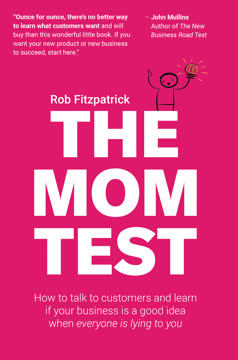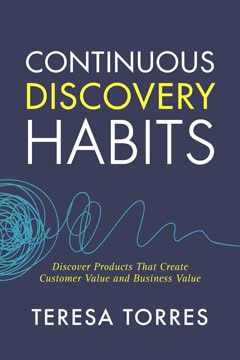つの重要なポイント
1. ウェブプロダクトデザインはユーザー体験に焦点を当てた反復プロセスである
ウェブのプロダクトデザインは、独自のスキルと機会の交差点に位置する。
ユーザー中心のアプローチ。 ウェブプロダクトデザインは、ユーザーのニーズを満たし、問題を解決するデジタル体験を創造することに焦点を当てている。従来のデザインプロセスとは異なり、ユーザーのフィードバックとデータに基づいて継続的に反復し、改善を行う。
多分野にわたるスキルセット。 成功するウェブプロダクトデザイナーは、多くの役割をこなす必要があり、以下のスキルを組み合わせることが求められる:
- ユーザー体験(UX)デザイン
- ユーザーインターフェース(UI)デザイン
- インタラクションデザイン
- 情報アーキテクチャ
- ビジュアルデザイン
- コーディングと開発
- マーケティングとビジネス戦略
この多様なスキルセットにより、デザイナーはユーザーのニーズとビジネスの目標の両方に対応する包括的なソリューションを作成することができる。
2. 効果的なデザインは機能を優先する
あなたが行うすべてのデザイン選択は、その厳しいフィルターを通して見られるべきである。その選択はユーザーに役立つか?その選択は彼女の体験を向上させるか?
明確さを創造性より優先。 革新的なデザインは魅力的であるが、使いやすさを犠牲にしてはならない。ユーザーが簡単に理解し、ナビゲートできる明確で直感的なインターフェースを優先する。
効果的なデザインのための主要な原則:
- 可能な限り馴染みのあるパターンと慣習を使用する
- ユーザーを混乱させる可能性のある専門用語や巧妙な命名スキームを避ける
- すべてのデザイン要素が明確な目的を持つようにする
- 実際のユーザーでデザインをテストし、問題点を特定して排除する
最終的な目標は、ユーザーがタスクを達成するために簡単に使用できるプロダクトを作成することであり、あなたの創造的な才能を見せることではない。
3. 常に変化を受け入れ、早期に頻繁にリリースする
早期にリリースし、頻繁にリリースする。
反復的な開発。 完璧を待つのではなく、頻繁で段階的な変更を受け入れるアジャイルなマインドセットを採用する。このアプローチにより、以下が可能になる:
- プロセスの早い段階でユーザーフィードバックを収集する
- 問題を迅速に特定して修正する
- 変化するユーザーのニーズや市場の状況に適応する
- ユーザーが望まない機能に多大な投資をするリスクを減らす
継続的な改善。 プロダクトを時間とともに進化する生きた存在として捉える。以下のプロセスを確立する:
- 定期的なユーザーテストとフィードバック収集
- 使用データとメトリクスの分析
- 改善の優先順位付けと実施
- ユーザーへの変更の効果的な伝達
早期に頻繁にリリースすることで、実験と学習の文化を育み、より良いプロダクトと満足度の高いユーザーを生み出す。
4. ユーザーの信頼と満足度を高めるために見えない機能を構築する
見えない機能は、時には見える機能よりも重要である。なぜなら、それがユーザーに与える感情的な影響が大きいからだ。
表面を超えて。 ビジュアルデザインは重要であるが、ユーザー体験の多くの重要な側面はすぐには見えない。以下に焦点を当てる:
- パフォーマンス:高速な読み込み時間とスムーズなインタラクションを確保する
- セキュリティ:ユーザーデータとプライバシーを保護する
- 信頼性:安定したバグのない体験を提供する
- サポート:アクセスしやすく役立つカスタマーサービスを提供する
信頼と信頼性。 これらの見えない機能は、プロダクト全体のユーザーの認識に大きく貢献する。これらを優先することで、以下が可能になる:
- 長期的なユーザーの信頼を築く
- ユーザーの満足度とリテンションを高める
- 表面的なデザインにのみ焦点を当てる競合他社との差別化を図る
ユーザーはこれらの機能が欠如しているか、うまく実装されていないときに最も気づくことが多いため、時間とリソースを投資して正しく実装することが重要である。
5. 一貫性を保つためにストーリーファーストのアプローチでデザインする
デザインは物語である:始まり、中間、そして終わり。
ナラティブフレームワーク。 プロダクトデザインを一貫したユーザージャーニーの作成と捉える。以下を定義することから始める:
- ユーザーの初期の問題やニーズ
- プロダクトを使用してそれを解決するためのステップ
- 望ましい結果と感情的な反応
一貫性のある実行。 このナラティブをデザインのすべての側面にガイドとして使用する:
- ユーザーフローと情報アーキテクチャ
- ビジュアルデザイン要素とブランディング
- メッセージングとマイクロコピー
- 機能の優先順位付けと開発
プロダクト全体で明確なストーリーを維持することで、より魅力的で記憶に残るユーザー体験を創造し、全体的なビジョンと目標に一致させることができる。
6. 様々な規模のチーム内で効果的に協力する
協力は自動的に起こるものではない。それは選択によって起こる。計画し、奨励することが重要である。
チームダイナミクス。 異なるチーム規模には異なる協力戦略が必要であることを認識する:
ソロデザイナー:
- 外部のフィードバックと視点を求める
- メンターを見つけるか、デザインコミュニティに参加する
小規模チーム(4-7人):
- 明確な役割と意思決定プロセスを確立する
- 多様なスキルと視点を活用する
- オープンなコミュニケーションとアイデア共有を促進する
大規模チーム:
- 小規模で焦点を絞ったサブチームに分ける
- チーム間のコミュニケーションを管理するコーディネーターを任命する
- 共有の目標とデザイン原則に一致させる
協力を育む。 チームの規模に関係なく:
- 進行中の作業の定期的な共有を奨励する
- クロスファンクショナルな入力の機会を作る
- 建設的な批評と反復の文化を確立する
協力を積極的に促進することで、チームの集団的な創造性と専門知識を活用し、より良いプロダクトを作成することができる。
7. 多様なフィードバックを収集し、活用して継続的に改善する
あなたは同様の作業とプロセスを順番に行うことになる。繰り返しを通じて、磨き上げ、洗練させる。
フィードバックループ。 ユーザーの洞察を収集するための複数のチャネルを実装する:
- 定量データ:アナリティクス、A/Bテスト、使用メトリクス
- 定性フィードバック:ユーザーインタビュー、アンケート、サポートチケット
- 観察研究:ユーザビリティテスト、フィールドスタディ
洞察に基づく行動。 以下のプロセスを開発する:
- フィードバックの分析と優先順位付け
- 洞察を実行可能なデザイン変更に変換する
- 実施した改善の影響を測定する
フィードバックの収集は継続的なプロセスである。方法を継続的に洗練し、学んだことに基づいてプロダクトを調整することで、ユーザーにとって常に関連性があり価値のあるものにする。
8. デザインプロセスをサポートする柔軟なツールを選ぶ
使用するツールは、作業を容易にすることもあれば、困難にすることもある。
ツールアグノスティシズム。 特定のツールやソフトウェアに過度に依存しないようにする。代わりに:
- 達成する必要がある結果に焦点を当てる
- ニーズが変わるにつれて新しいツールを試すことにオープンである
- 複数のツールを組み合わせてカスタムワークフローを作成する
必須ツールキット。 特定のツールは異なるかもしれないが、以下を含めることを検討する:
- プロトタイピングとワイヤーフレーム作成ツール
- ビジュアルデザインソフトウェア
- コードエディタと開発環境
- バージョン管理システム
- アナリティクスとユーザーテストプラットフォーム
最適なツールは、しばしばあなたが最も快適で効率的に使用できるものである。生産性を高め、デザインプロセスをサポートするツールを優先し、トレンディなまたは複雑なソリューションを無理に使用しないようにする。
9. 人々が最も重要:人間のニーズと行動に基づいてデザインする
あなたのプロダクトを既に使用している、または使用する予定の人々の欲望とニーズは、創造プロセスにおいて最も重要な考慮事項である。
人間中心のデザイン。 デザインの決定を行う際には、常にユーザーのニーズ、目標、行動を優先する。これには以下が含まれる:
- 徹底的なユーザーリサーチの実施
- 詳細なユーザーペルソナとシナリオの作成
- ユーザーの課題と動機に共感する
- プロセス全体で実際のユーザーでデザインをテストする
機能を超えて。 ユーザー体験の感情的および心理的な側面を考慮する:
- あなたのプロダクトはユーザーにどのような感情をもたらすか?
- どのような社会的または個人的なニーズを満たすか?
- ユーザーの日常生活やルーチンにどのように適合するか?
人間のニーズを深く理解し、それに基づいてデザインすることで、ユーザーに深く共鳴するプロダクトを作成し、採用率、満足度、忠誠心を高めることができる。
10. 何も貴重ではない:常にプロダクトを進化させる準備をする
ウェブプロダクトは決して完成しない。
無常を受け入れる。 デジタルの世界では、どのデザインの決定も最終的なものではないことを認識する。以下のマインドセットを育む:
- プロダクトを常に進化するものとして捉える
- 変化と改善を歓迎する
- 以前の作業を捨てたり修正したりすることにオープンである
継続的な最適化。 以下のプロセスを確立する:
- 既存の機能を定期的にレビューし、疑問を投げかける
- 改善や簡素化のための領域を特定する
- 新しいアイデアやアプローチを試す
- もはやユーザーやビジネスの目標に役立たない機能を廃止する
この柔軟なマインドセットを維持することで、変化するユーザーのニーズ、技術の進歩、市場の状況に適応できるプロダクトを作成し、長期的な成功と関連性を確保する。
最終更新日:
FAQ
What's "Product Design for the Web" about?
- Overview of the book: "Product Design for the Web" by Randy J. Hunt explores the principles of designing and releasing web products. It provides insights into the entire process from conception to release.
- Focus on web products: The book emphasizes the unique aspects of web product design, differentiating it from traditional software and physical product design.
- Practical guidance: It offers practical advice on how to think like a product designer, manage design processes, and continuously improve web products.
Why should I read "Product Design for the Web"?
- Comprehensive guide: The book covers a wide range of topics essential for anyone involved in web product design, from beginners to experienced designers.
- Real-world insights: Randy J. Hunt shares his experiences as a Creative Director at Etsy, providing real-world examples and lessons learned.
- Continuous improvement: It emphasizes the importance of iterative design and continuous improvement, which are crucial in the fast-paced digital world.
What are the key takeaways of "Product Design for the Web"?
- Iterative design process: Emphasizes the importance of shipping early and often, and learning from each iteration to improve the product.
- User-centered design: Focuses on understanding and prioritizing the needs and desires of the people who will use the product.
- Collaboration and feedback: Highlights the value of collaboration and gathering feedback throughout the design process to refine and enhance the product.
What is the "ship early, ship often" concept in the book?
- Agile development: The concept is derived from agile development, encouraging frequent and small changes to the product.
- Feedback-driven: By shipping early, designers can gather feedback quickly, allowing for rapid iterations and improvements.
- Risk reduction: Frequent releases help identify and fix problems early, reducing the risk of major issues later on.
How does Randy J. Hunt define a web product in the book?
- Beyond a website: A web product is more than just a website; it involves interactive and participative experiences.
- Attributes of a product: It includes features like frequent use, bidirectional data flow, and user accounts, distinguishing it from static websites.
- Complex systems: Web products are complex systems that often extend beyond the browser, integrating with other services and devices.
What are the invisible features mentioned in "Product Design for the Web"?
- Performance: Includes speed and reliability, which are crucial for a positive user experience but often go unnoticed until they fail.
- Community and support: Building a strong community and providing excellent support are essential for user trust and satisfaction.
- Security: Ensuring user data is secure is a critical invisible feature that can significantly impact user trust.
How does the book suggest handling user behavior?
- Positive reinforcement: Use design to encourage desired behaviors by rewarding users for taking the intended actions.
- Avoiding punishment: Design should avoid punishing users for mistakes, instead guiding them gently towards the correct actions.
- Game mechanics: Implementing game-like elements can motivate users to engage more deeply with the product.
What role does storytelling play in product design according to the book?
- Narrative creation: Storytelling helps create a narrative for the product, providing direction and purpose throughout the design process.
- Press release exercise: Writing a press release before designing helps clarify the product's value and intended impact.
- Consistency of vision: A strong story ensures consistency in design decisions, aligning them with the product's goals and user needs.
What does the book say about the importance of collaboration in design?
- Inclusive process: Collaboration brings diverse perspectives and skills, enriching the design process and leading to better outcomes.
- Team dynamics: Whether working alone or in a team, understanding the dynamics and strengths of different team sizes is crucial.
- Iterative feedback: Regular collaboration and feedback loops help refine ideas and ensure the product meets user needs.
What are some best quotes from "Product Design for the Web" and what do they mean?
- Design is not style: This quote emphasizes that design is about solving problems and meeting user needs, not just about aesthetics.
- Ship early, ship often: Highlights the importance of iterative design and learning from each release to improve the product.
- People matter most: Reminds designers to prioritize the needs and experiences of the users above all else in the design process.
How does the book address the concept of "nothing is precious"?
- Continuous evolution: Web products are never finished; they should continuously evolve based on user feedback and changing needs.
- Non-static viewpoint: Designers should avoid becoming attached to any one solution, remaining open to change and improvement.
- Opportunity in change: The digital medium allows for constant iteration, providing opportunities to enhance the product continually.
What tools and methods does the book recommend for product design?
- Tool-agnostic approach: Encourages using whatever tools work best for the task at hand, whether existing or custom-built.
- Prototyping: Recommends using tools that are as close to the final product as possible to streamline the transition from prototype to product.
- Feedback mechanisms: Suggests building feedback loops into the product to gather user insights and drive continuous improvement.
レビュー
本書『ウェブのためのプロダクトデザイン』は、平均評価が5点中3.76と、概ね好評を得ている。読者は、特に初心者や印刷デザインからの転向者にとって、デジタルプロダクトデザインの原則を簡潔に紹介している点を評価している。多くの人が、プロダクトデザインの考え方やプロセスを理解するための貴重なリソースと見なしている。しかし、経験豊富なデザイナーの中には、内容が深みや新規性に欠けると感じる者もいる。本書は、実践的な洞察、ユーザー中心のデザインの重要性、反復開発の指針を強調している点で称賛されているが、具体的な例や詳細な分析をもっと求める声も一部にある。








